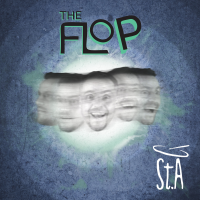Home » Jazz Musicians » Daniel Lanois
Daniel Lanois
"I want to leave something behind that means something," Daniel Lanois told Rolling Stone' s James Henke, explaining his singular approach to life and record making. "Am I going to follow my own ideas and philosophies, or am I just going to fall in the rut of doing rubbish for the sake of making a living?" Lanois's decision to follow a more meaningful approach led him from recording groups in a homemade studio in the 1970s to forging a partnership with avant-garde producer Brian Eno in the early 1980s to producing some of the best-known—even legendary—acts in popular music, including U2, Peter Gabriel, Robbie Robertson, the Neville Brothers, and Bob Dylan.
Lanois's record-producing capabilities are virtually unassailable: all productions have been hailed. Although Nicholas Jennings, writing for Maclean's, credited Lanois's success as a producer to his "reputation for a lighter touch and for bringing out the artist's best," it is perhaps Lanois's spiritual conviction to capture an artistic moment that has gone the furthest in reaching listeners. "I'm passionate about music," he emphasized to Richard Flohil in Canadian Composer. "I want to get committed, passionate music on a record, so that other people can understand the passion and the message."
Lanois began his recording career in 1970 in a small studio he and his brother Robert built in their mother's basement. "From the beginning," Flohil recounted, "the studio's reputation was strong; there was a nice atmosphere and a relaxed feeling; [the brothers] were good engineers and were able to help many artists sharpen their material in the studio." They recorded dozens of artists from the surrounding area throughout the 1970s. In 1980, because of increased demand, the Lanois brothers were forced to open the larger Grant Avenue Studio in nearby Hamilton, Ontario. Here Lanois's producing talents gained notice through work with such groups as Martha & the Muffins and the Parachute Club. With the arrival of rock experimenter Brian Eno to the Grant Avenue Studio in the early 1980s, however, Lanois's recording direction changed.
Looking for a studio out of the mainstream, Eno came to Lanois's to begin his self-termed "ambient music" series of records. The first of these experimental recordings, which were to become highly influential in the music industry, Lanois simply thought of as "badly recorded piano tapes," he admitted to Rob Tannenbaum in Canadian Composer. But after working on these carefully composed and recorded works, Lanois found he "just got into that pace. Really quiet and atmospheric music that paints a very strong picture with slow detail—almost like musical landscapes," he explained to Henke. The artistic view Eno opened up for Lanois was accompanied by an expanded technological understanding as well. "The challenge of evoking a strong emotion on an instrumental record without the benefit of lyrics forced Lanois to experiment with outboard effects, playing the studio as he would a guitar," Tannenbaum wrote.
Read moreTags
Bob Dylan: Fragments - Time Out of Mind Sessions (1996-1997): The Bootleg Series, Vol. 17

by Mike Jurkovic
Dylanologists of every stripe and level of Dylanalia had it partly right when Bob Dylan released Time Out Of Mind (Columbia) in mid-September 1997. “Great album!" They/we/us all screamed. “Great songs!" “Dylan's best since the totemic Blood On the Tracks!" (Columbia, 1975) “Mid-career masterwork!" “The Bard's New Relevance!" If you weren't there the first time it really was a Category 5 idiot wind of biblical proportion. In the chalk dust arena of popular punditry, the second enfant ...
Continue ReadingU2: All That You Can't Leave Behind 20th Anniversary Deluxe Edition (2CD)

by Doug Collette
The music of U2 on All That You Can't Leave Behind is very much in keeping with the austere black and white graphics, preserved throughout the graphic design of this digipak as well as its enclosed twenty-four page booklet within. A distinct move away from the density of production experimentation on their three previous studio albums—Achtung Baby (Island, 1991), Zooropa (Island, 1993) and Pop (Island, 1997)— the sound produced by Brian Eno and Daniel Lanois on this 2000 project is ...
Continue ReadingPunktFestival 2017

by Luca Vitali
Punkt Festival Kristiansand, Norvegia Varie sedi 31.8-2.9.2017 Come sempre Punkt è un festival fuori dall'ordinario e all'insegna dell'imprevisto e dell'imprevedibile. Una sorta di Industria 4.0 della musica: fuori dal “circolo" dei tour estivi, tipico dei festival jazz, e poco interessato a fotografare il passato e il presente, è invece molto attento a dare vita a nuovi progetti per il futuro. Gli esempi sono tanti: Sidsel Endresen e Philip Jack, Evan Parker con Okkyung Lee, John ...
Continue ReadingDaniel Lanois: Goodbye to Language

by Nenad Georgievski
Consistently imaginative, producer, guitarist and sonic explorer Daniel Lanois has long been hailed not only as a studio wizard but as a gifted musician with a definite and unabashed affinity for experimentation and the avant-garde. Lanois is lauded for many things and among those is his uncanny ability to create wonderful music and ambiances from minimal sonic elements. Goodbye to Language is a deeply beautiful record that redefines the word meditative and shimmers with breathtaking passages of unhurried, ...
Continue ReadingDaniel Lanois: For the Beauty of Wynona

by Nenad Georgievski
While Daniel Lanois spent most of the '80s and the first years of the '90s honing his craft as a producer, he cautiously emerged as a songwriter and recording artist with Acadie. (Red Floor Records, 1989) A mere four years after this beautiful debut he returned with another intriguing and haunting collection of songs titled For the Beauty of Wynona. Recorded during a period when Lanois was producing landmark records with U2 and Peter Gabriel created a record with startling ...
Continue ReadingTop 12 "Most Read" and "Most Recommended" Articles: 2014

by Michael Ricci
All About Jazz tracks how often an article is read and recommended, and the articles listed below represent our top twelve published in 2014. Top 12 “Most Read" Articles Catching Up With Ron Aprea's Tribute to John Lennon by Nicholas F. Mondello Published: August 19, 2014 Live Reviews King Crimson at The Warfield by John Kelman Published: October 11, 2014 Interviews Takuya Kuroda: Rising ...
Continue ReadingDaniel Lanois: I Look for Commitment and a Lot of Heart and Soul

by Nenad Georgievski
Whenever I'm asked to name a list of Top 10 all time favorite records, the list slightly changes and shuffles every time. However, one of the most common denominators to those diverse lists is producer/musician Daniel Lanois. Often called a “studio wizard" or “studio magician," this producer has become renowned both for his proficiency in the studio and his gift for motivating and enabling people to reach new creative heights. Armed with an intuitive combination of emotions and technical proficiency, ...
Continue ReadingDaniel Lanois Black Dub on Guitar Center Podcast

Source:
JamBase
FEATURES LIVE VIDEO PERFORMANCES OF “SURELY" AND “SILVERADO" Guitar Center today released a new episode of their At: Guitar Center with Nic Harcourt podcast featuring Black Dub, the new project from Grammy Award-winning producer and recording artist Daniel Lanois (U2, Bob Dylan, Brian Eno, Willie Nelson and Neil Young). In addition to the interviews with Lanois, the podcast includes exclusive in-studio performances of “Surely" and “Silverado." Check out video of the performances below. Black Dub's self-titled debut album was released ...
read more
Daniel Lanois: The Blacker the Dub, the Sweeter the Juice

Source:
JamBase
By Dennis Cook Infusing music with soul is no easy task. And we're not talking some stock R&B thing, this is soul in the archetypal sense—the invisible, overarching embodiment of things beyond the world we can see and taste. Soul in music is what makes it more than ditties meant to shift units and pass the time. Soul in music is what makes it breathe and leap into our hearts and minds, and yes, bodies, to live anew in our ...
read more


























